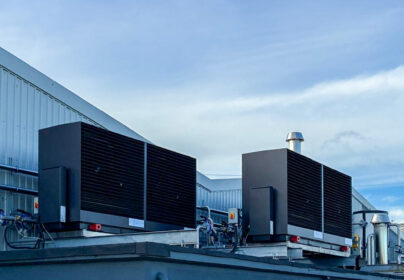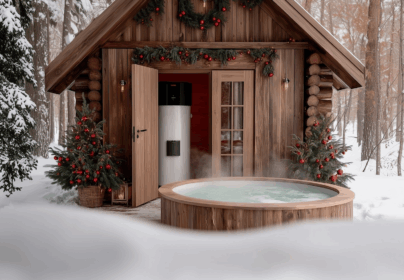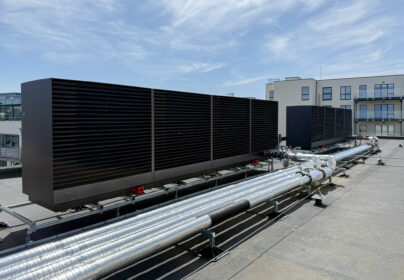![TAKING CARE OF OUR PLANET BY HEATING WITH A HEAT PUMP]()
The Environmental Agency of the Republic of Slovenia (ARSO) measures most daily exceedances of permissible values during the autumn and winter months. The primary source of additional air pollution is small heating devices, especially those that are neither properly nor regularly maintained.
The Chimney Sweep Section at the Chamber of Craft and Small Business of Slovenia also highlights issues related to inappropriate fuel, such as lower quality wood, damp wood, low-quality wood chips, waste, and adhesives in heating devices, among others.
Heat pumps are an extremely clean source of heating, as they do not produce any solid particles during operation. Heat pumps are the only technology that allows these emissions to be channeled to power plants, which have significantly higher combustion efficiency. Additionally, power plants have gas emission filtration to reduce hazardous substance emissions (SO2, NOX, PM solid particles) as much as possible.
In the worst-case scenario, environmental emissions due to heat pumps are at least 12 times smaller than those from a traditional heating system.
Furthermore, heat pumps utilize ambient heat, meaning that the emission of hazardous substances is further reduced by the efficiency factor of the heat pump.
Example: To obtain 10 kWh of heat, in a traditional solid fuel heating system, x kg of fuel must be burned. Assuming that the electricity supply for the heat pump comes exclusively from coal-fired power plants, we would need at most 1/3, and in the case of a good heat pump, only 1/5 of the fuel compared to a traditional heating system, to produce the same amount of heat, i.e., 10 kWh. Simply on this basis, hazardous substance emissions can be drastically reduced. Taking into account that flue gases are filtered in power plants and that the share of electric energy from power plants in Slovenia is only approximately 35% , emissions of hazardous substances can be further reduced by at least 4 times compared to traditional heating systems. Consequently, hazardous substance emissions due to heat pumps are at least 12 times smaller than those from a traditional heating system. Since fuel combustion occurs outside densely populated areas, concentrations of hazardous substances in inhabited areas are consequently immediately lower.
The heat pump obtains between 50% and even up to 80% of all required heating energy from the environment (free of charge), with the remaining portion being electrical energy. Additionally, such heating significantly influences the reduction of CO2 emissions (up to a 100% reduction), ensuring a cleaner environment for ourselves and our children.
Have you ever considered the efficiency of your heating system? Did you know that the efficiency of heating can be further improved, resulting in savings and simultaneously contributing to a cleaner environment?
With the KRONOTERM heat pump, you can save up to 80% on heating costs, offering a clean and environmentally friendly solution with a long lifespan that requires minimal maintenance.
The heat pump can be used for heating our homes and/or producing hot sanitary water. The advantage of a heat pump lies in its ability to extract the majority (2/3 or more) of the required heat from the environment (air, groundwater, or soil) and raise its temperature to a level suitable for heating using a compressor. There are three types of heat pump systems based on the energy source: air/water, water/water, and ground/water. For example, the designation air/water means that the heat pump extracts heat from the surrounding air and transfers it to the heating medium, which is water. If we have a water/water or ground/water heat pump system, it can also be used for cooling spaces when applied to underfloor or wall heating.
The main characteristic of a heat pump is the coefficient of performance (COP), which is the ratio of the heat obtained to the electrical energy consumed. The annual COP typically ranges between 3 and 5, while KRONOTERM heat pumps achieve an annual COP exceeding 6. If the COP value is 4, it means that, for example, the heat pump only consumes 25 kWh of electrical energy for obtaining 100 kWh of heat, with the remaining 75 kWh being extracted from the environment. The COP value depends on the type of heat pump and the source of heat from the environment.
Low energy consumption is also associated with energy costs, which are 60 to 80% lower for heating compared to other energy sources. The reduction in costs depends on the type of heat pump, the source of heat from the environment, and the type of energy carrier that would otherwise be used.
Heating with a heat pump is reliable, as electricity is the only energy carrier that is mostly produced in Slovenia. With a heat pump, there is no need to worry about fuel supply, a fuel tank, or storage space for fuel, and no chimney is required. Maintenance is simple and inexpensive. Although the initial investment in a heat pump system is higher, it pays off in 5 to 7 years due to lower operating costs, and thereafter, only the cost of consumed electrical energy remains, which is significantly lower than the cost of heating oil or natural gas. Additionally, the use of a heat pump reduces negative environmental impacts.
Due to its numerous benefits, the state can support the installation of heat pumps with subsidies and loans at a reduced interest rate(check at your local authorities). KRONOTERM heat pumps are also listed among the heat pumps eligible for subsidies.





